Serfas Headlight Strap
My Serfas bicycle front headlight broke the other day. It appears to have been due to the rubber cracking and no longer being able to flex. Serfas does actually offer a replacement mount for the huge sum of $8. However it's likely that in a couple years this too will fail and I will again need to replace it.
Now manufacturing a part out of rubber (or at least silicon) is technically something I could do, however I already have some leather and leather is a great material for something like this: It's biodegradable and can last a long time.
I used about 4mm thick leather and it worked well. To build this you'll need a peice around 80mm by 20mm. The final product will need to be about 54mm between pins. To create the bends that hold each pin what you need to do is get the leather wet, then fold it around the pins and clamp it in place. This will force the curve to "set" without damaging the leather in the process. Then sew these two folds in place using leather string. Almost certainly you'll need to trim down the sides around the bends as they tend to become wider when bending, so don't sew to the edge until you've test fit the strap in place. I did some stitches around the one end to keep the pin in place. I'm not sure if it also adds any meaningful strength, but it does work to keep the pin from moving around as much.
The final strap should look something like this:
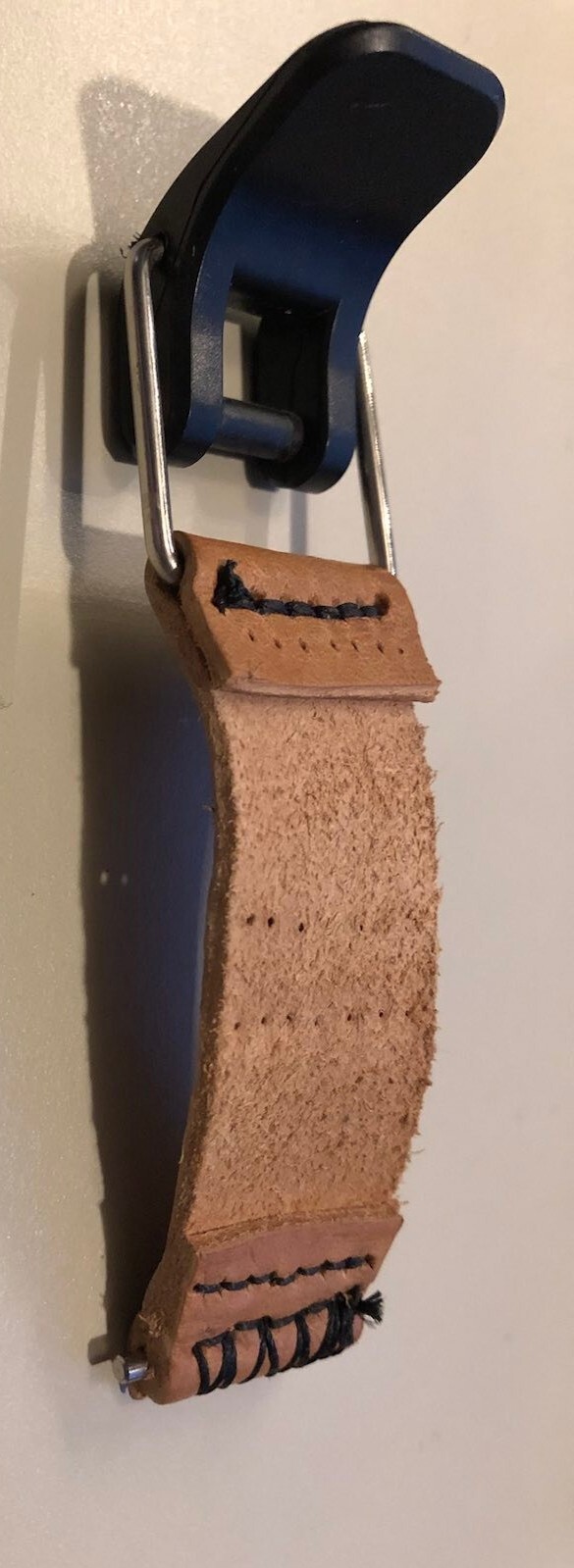
Tags: Repair
Breaking up the Ship of Theseus
I'm a repairer. I enjoy fixing things. Nearly everything I own I've taken apart to a certain extent. Over the years I've come to understand more about this obsession for me and it really comes down to:
- A desire to learn.
- A desire to waste less
- A desire to preserve
My early desire to fix was because of a desire to understand and learn how things were built. Often this is still where the inspiration comes from for me.
The desire to waste less is a secondary reason in many cases. I worry about the garbage we generate daily and wish to reduce my overall impact.
The desire to preserve is a more emotional one, as I think most preservation is. For me often this comes from not wanting to let go. I hold onto objects because I feel an emotional connection to them, they remind me of events or people just the way that scents or photographs do for others. This is part of the reason why I have only owned one car. It's 24 years old now and I have no plans to let it go, I'll just keep fixing it.
As a professional in the field of electronics I also have unique opportunities to repair that most people do not. I am able to talk with experts and learn how to do repairs on complicated electronics myself. This is in some ways no different than learning machining so you can fix something. However there are things that even I cannot fix and indeed nobody on earth can fix: Micro-circuits.
This realization started when I decided I'd really like an iPod classic, 5th generation. I bought a couple broken ones thinking that surely I, a person with experience in electronics design and fabrication, can repair them. However with complicated components failing like amplifiers, processors, etc. and each one being unique and no longer in production, there is little to nothing I can really do short of amalgamating mutliple units together to attempt to create a functioning one. With the complexity of modern solding this is also rather difficult. A board with BGA SMT components on both sides is much more difficult to reflow, as even the manufacturer would have glued the components down to keep them from dropping off. This creates additional complexity as at a minimum flux is required under the components to allow the solder to reflow and wet properly. Clearly this level of complexity, even in the mid 2000's, is not a maintainable level. Not that this is news, but everything is disposable when it has complex microelectronics in it.
I recently asked Jack Ganssle about the recyclability of embedded electronics and if there's been any progress. His answer was no, and that this isn't something that's likely to ever happen. This matches my own thoughts, there just isn't any incentive from governments or consumers to do it. Plus it's a hard problem to solve because of the high level of integration that prevents repairability. Our relentless march for "progress" is a major part of this problem. In the days of 74 series logic it was easy to replace components as they were relatively standard but now devices are frequently made obsolete. This is a major difficulty even in developing new designs, often at work we need to replace obscolete parts even before the design is finished.
I think this is why I often shy away from adding complexity to a project these days. Unnecessary complexity only adds maintenance costs and a likelihood of something failing.
I'm not sure what the answer is since we're in a continual arms race for superior technology. Perhaps it's world peace.
Tags: Writing, Repair, Electronics
HP System Supply Fan Replacement
I have an Agilent 6612C system DC power supply that has been very useful, but unfortunately the bearings in the fan have started to make noise. HP installed Papst Typ 612 fans in thes units, a 2.5W 60x60x25 mm fan.
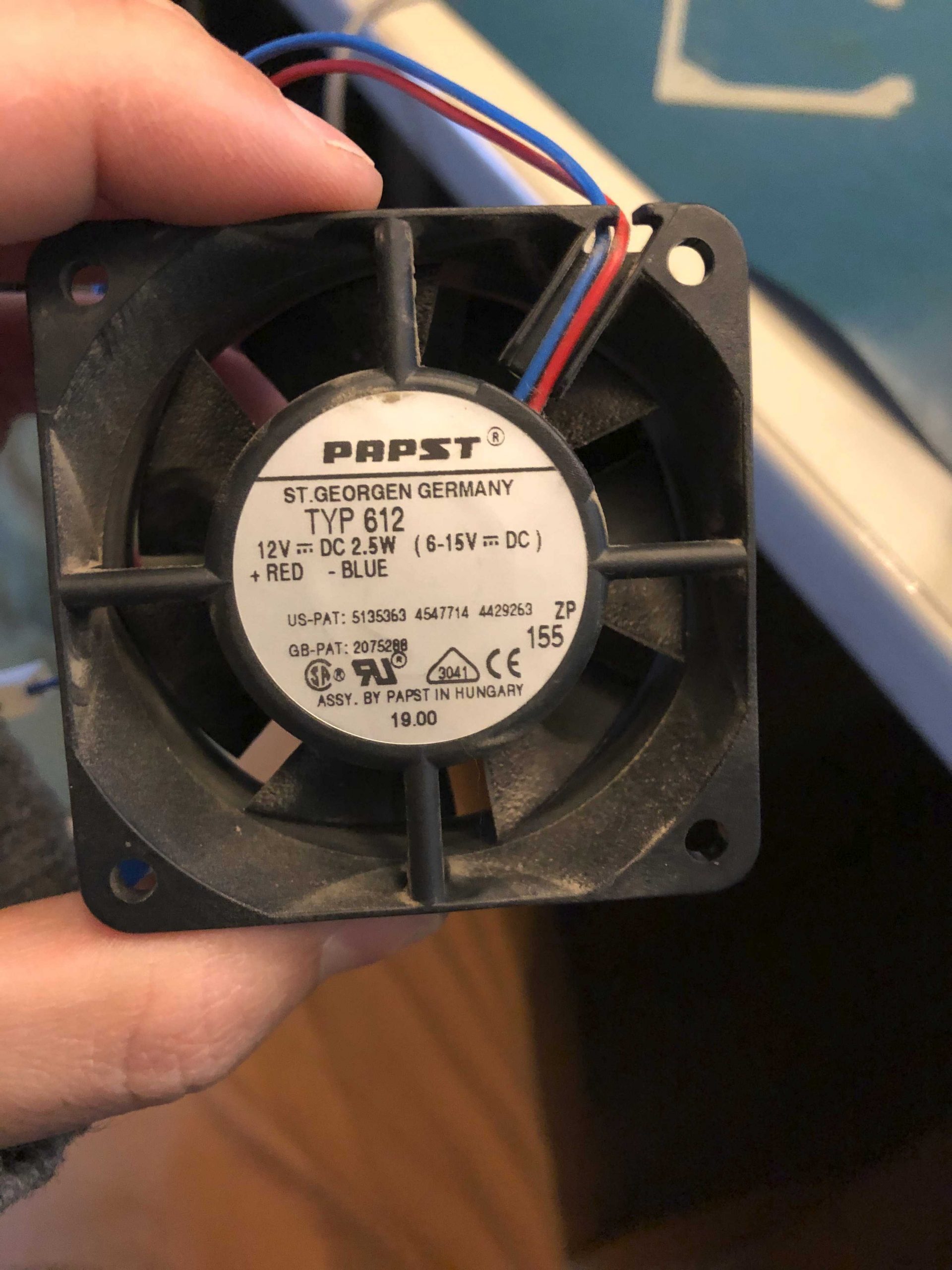
Papst 612 Fan
New, these seem to be around $50 part each. So instead I ended up replacing them with CUI CFM-6025V-152-312, which have similar specifications but possibly lower quality.
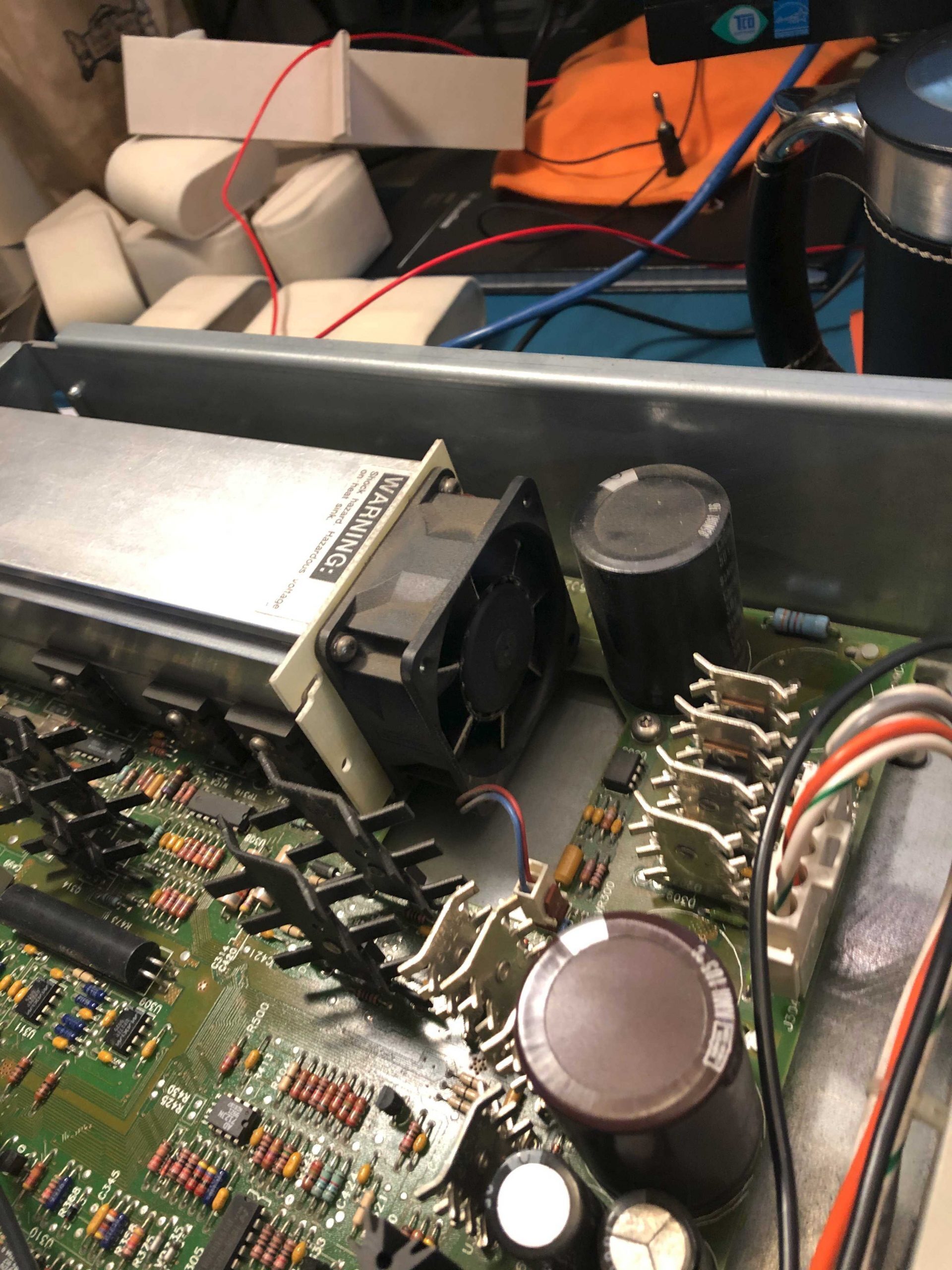
Tags: Repair
Reverse Engineering a 7 Segment Display
I recently came across an old five digit seven segment display and decided to see if I could give it a second live. It appears to have been from a weighing device of some kind, judging by the company name: Weigh Right Inc.
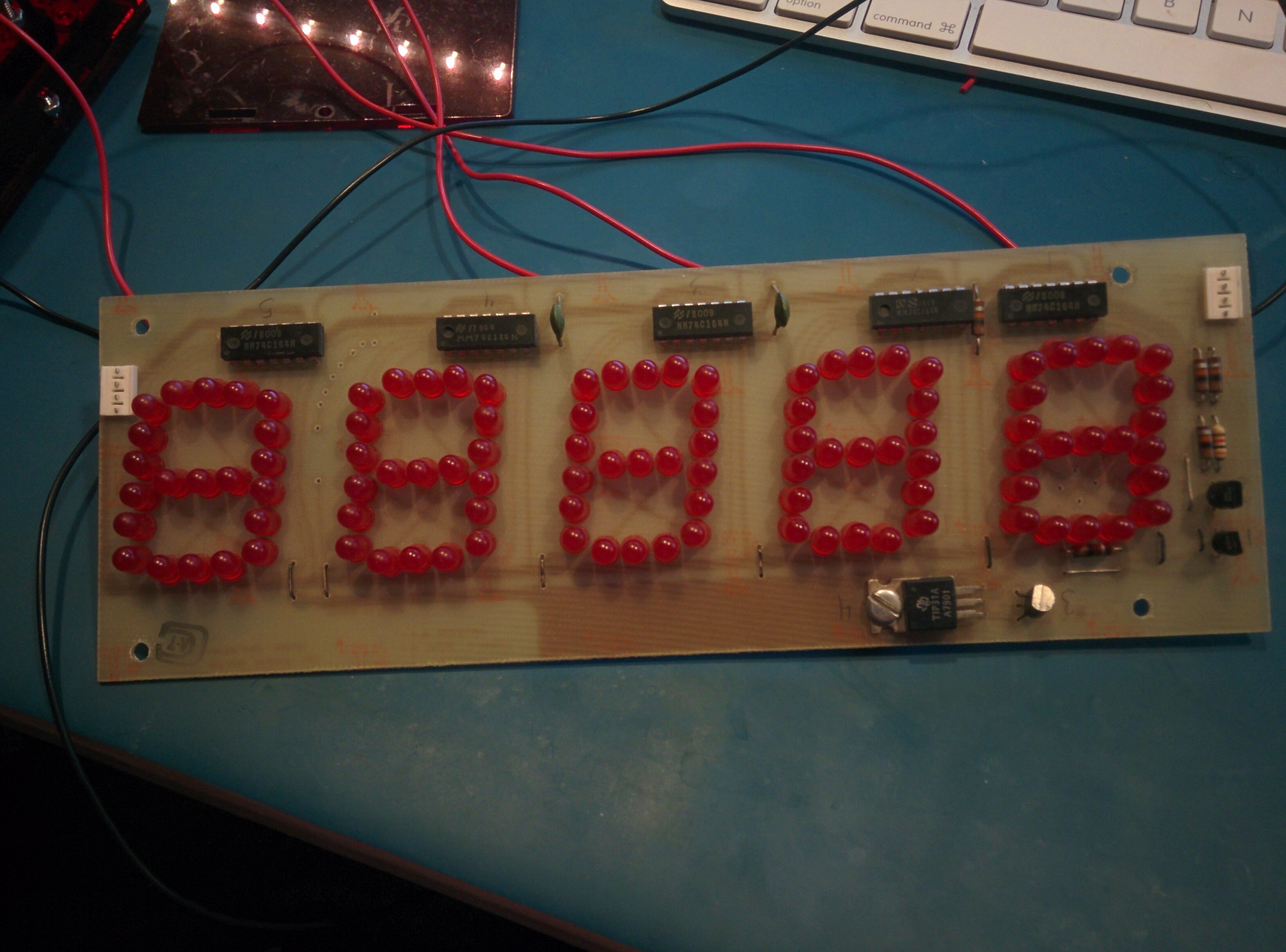
It's a gorgeous piece of hand drawn circuitry with lovely smooth lines. There are also very few jumpers on the board so clearly the designer had put in some effort into this single sided design.
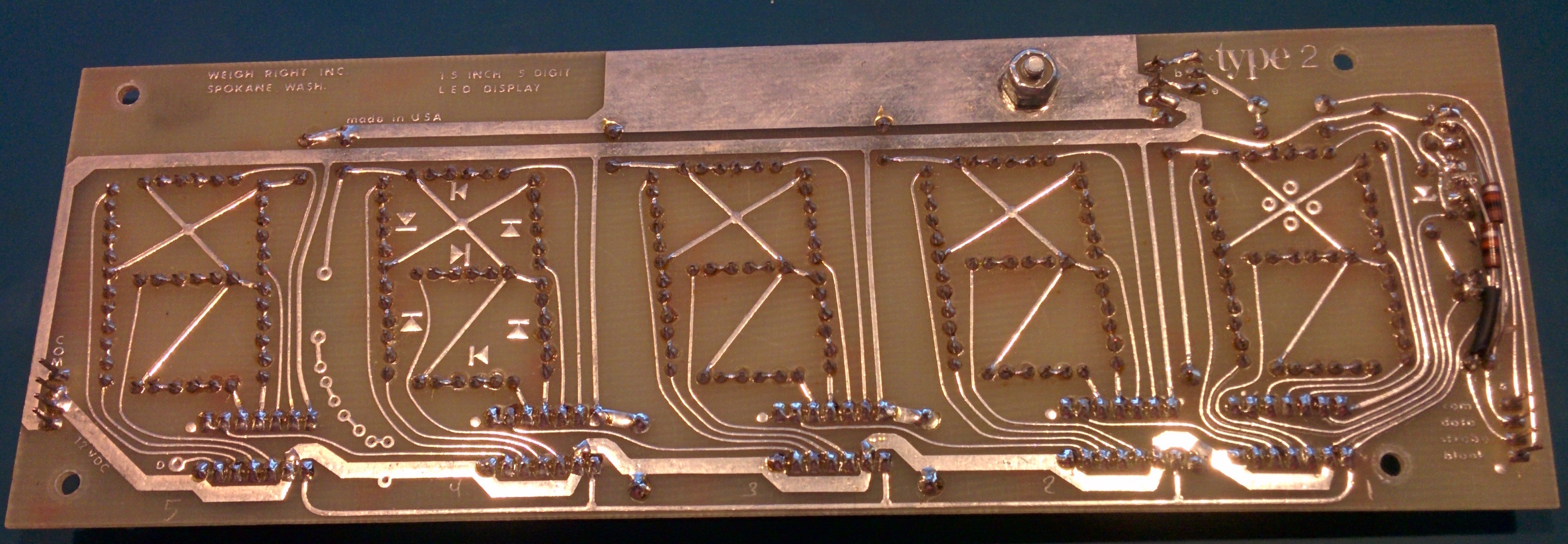
The display is essentially a serial to parallel converter, with 5 8bit 74C164 chips driving each digit. Each 74C164 has the 8th bit connected to the following chip to create a single serial interface for the entire display. To understand the design and how to interface to it I traced out the circuitry and drew up the schematic. You can find it on the github page for this project.
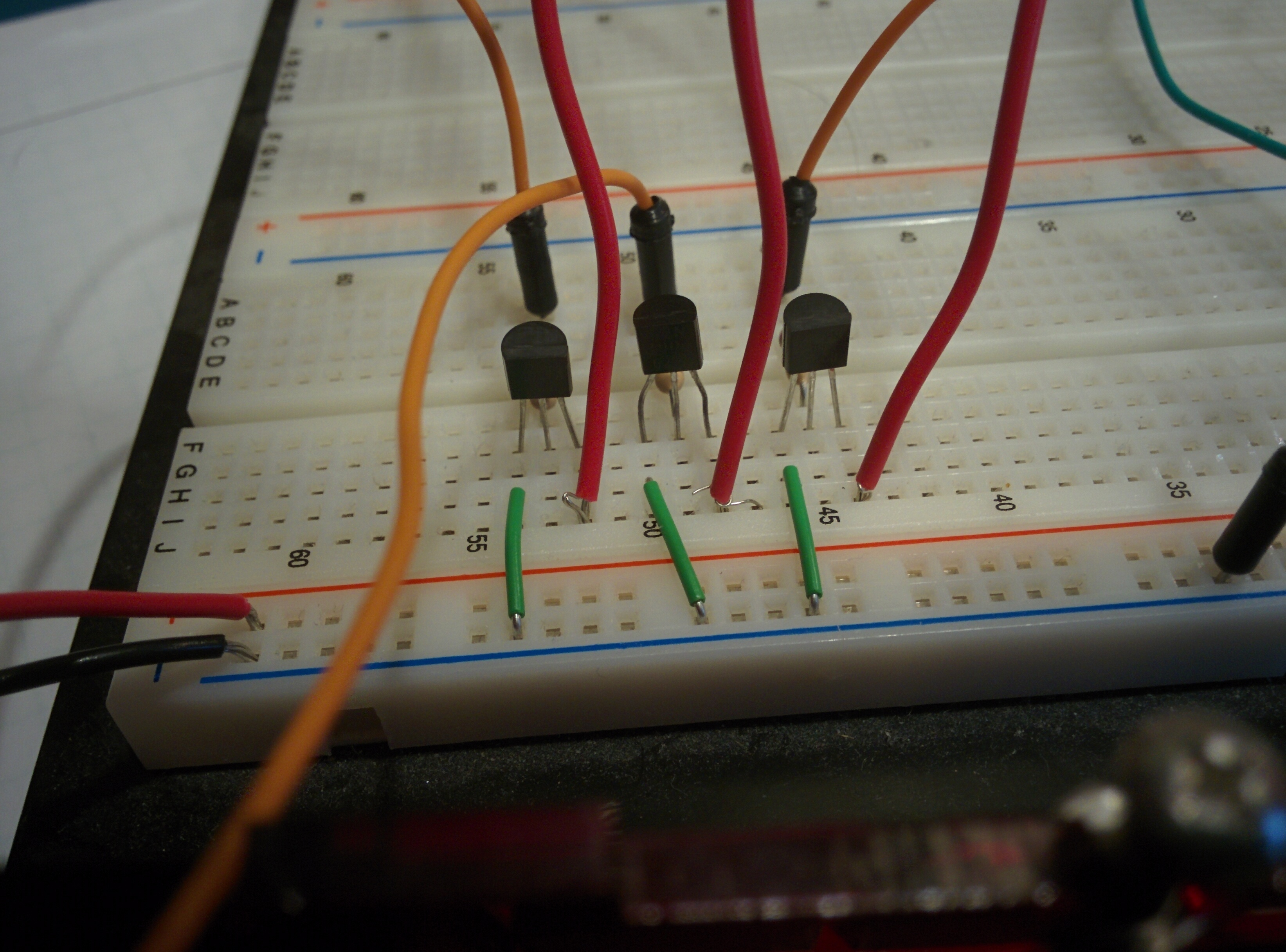
After figuring out the binary codes for each segment and building a simple 5V to 12V logic translator with 2N3904 transistors, I wrote up a simple script for an Arduino that would light up all the segments, which was when I found the reason that it was in the scrap pile:
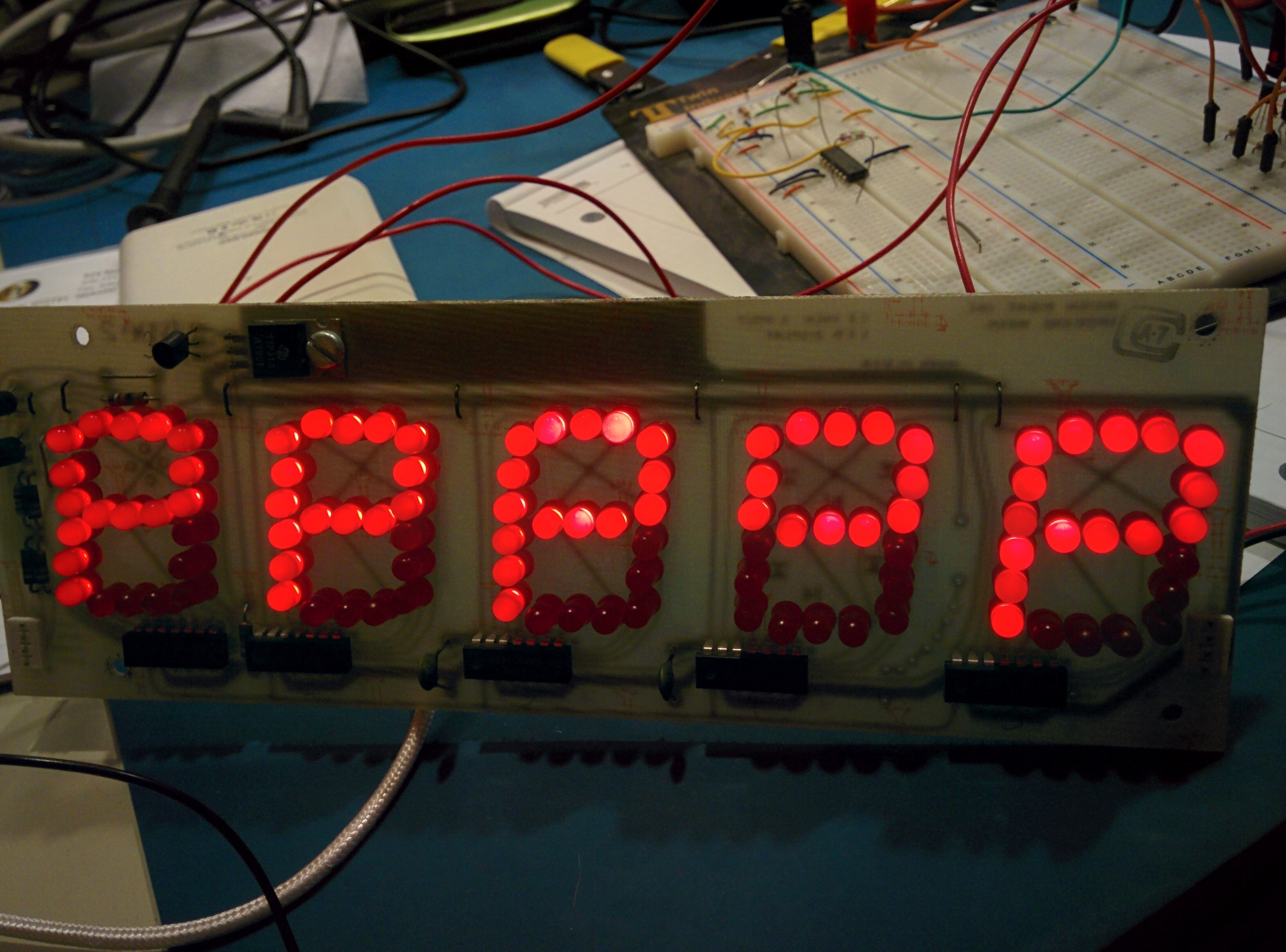
The display functioning, sort of...
Oh dear.
Rather than throw this away I figured I'd see if there was a way to fix it. First step was to figure out if it was the 74C164's. They seemed really hot so I quickly figured out the current for each segment by turning one on at a time and watching the power draw on my bench supply. 18mA. Which if you've read the data sheet for the 74C164 is a tad over the 8mA absolute maximum current of the device. Since I didn't have the original machine that this came from I can't say for sure that the display wasn't being flashed using PWM to reduce the drive current. I can only hope that the original designer didn't miss that. I just reduced the drive voltage from 12V to 8V to get the current down to below 8mA per segment.
After further inspection that all the LEDs were okay on the dead segments I tested the voltage output from the 74C164: 7V, even higher than the lit segments. A bit odd considering the LEDs themselves are fine. Turns out whoever assembled the board decided to save power by putting the LEDs in backwards on a few of the segments! An easy enough fix and now I have a fully functioning 5 digit 7 segment display!
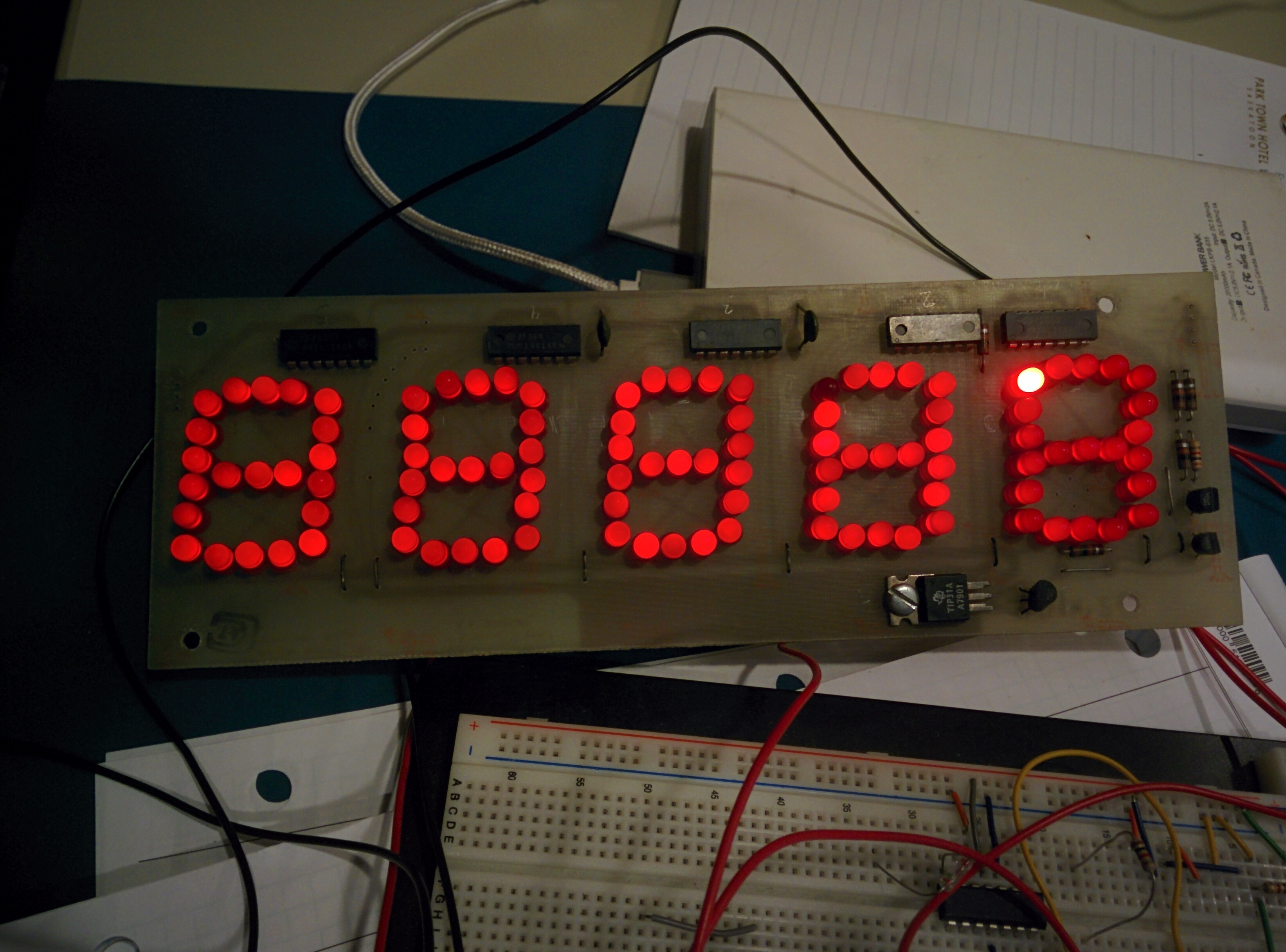
You may notice one LED is brighter than the others. One LED was actually dead and my replacement LED is much newer. Not sure if that's due to technological progress on LED efficacy or just wear (better on the former), but it's quite a big difference! There's another dead LED but somehow it's still conducting current so I might leave it in for now rather than having another strangely bright LED. If I can scavenge a period correct LED (not something I thought I'd ever want) then I might drop it in.
Side note: 1970's Solder smells weird. Not sure if it's the solder formulation, PCB materials, or flux residue.
Next step is just to figure out what to make with it!